In Brutal, a film by the artist NT, ominous music plays over lingering night-time footage of Birmingham’s post-war housing blocks. We are waiting for something to happen, something bad – but, apart from a few lights going on and off, nothing does. People aren’t getting knifed or raising the devil. They’re watching telly and going to bed. It’s a film that stands poised on the edge of cliché, revealing just how routine it has become to associate modernist architecture with horror.
As such it makes a reasonable introduction to ‘Horror in the Modernist Block’, a contemporary art group show at Ikon Gallery in Birmingham. The premise is on firm ground, with much to offer modernist architecture’s friends and foes alike. There’s a well-established body of expectations to slash at. But just as real menace never quite materialises in NT’s film, these promises aren’t quite fulfilled.
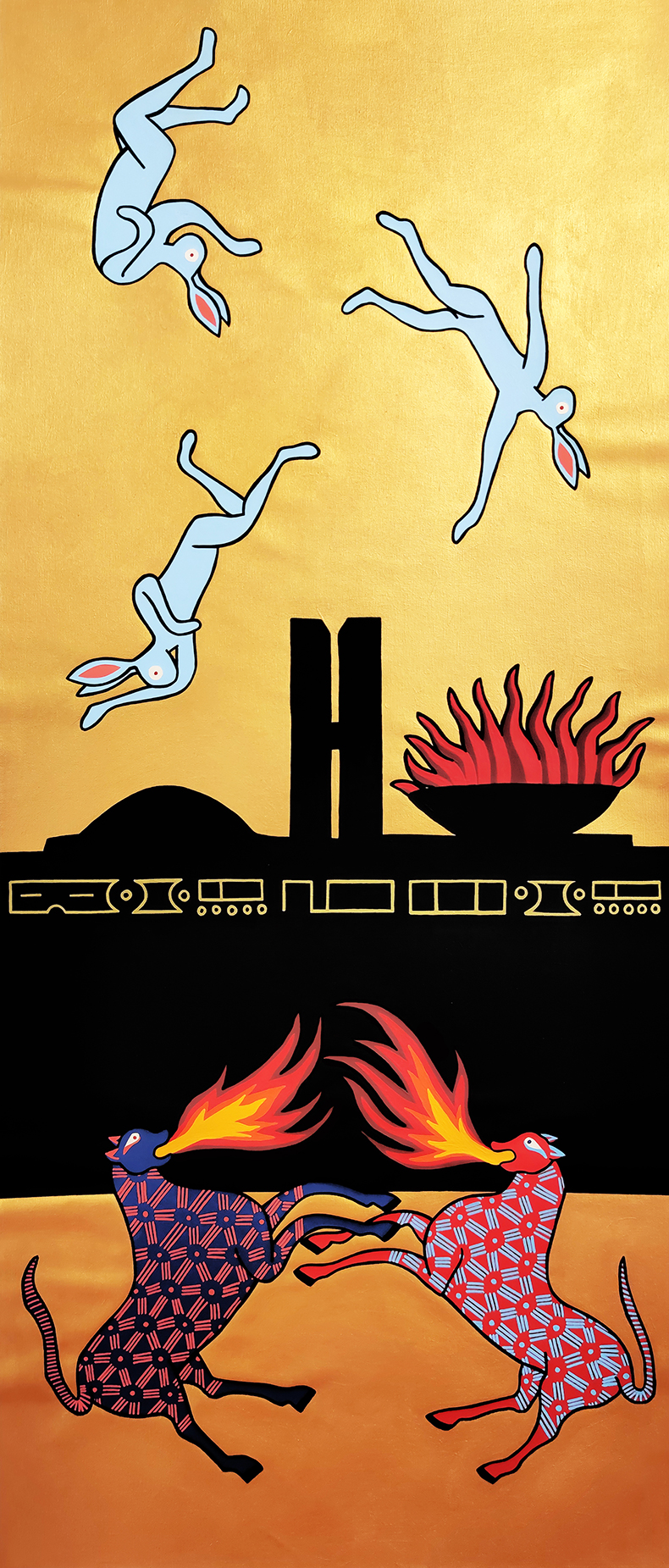
Spaghetti Junction (detail; 2022), Ismael Monticelli. Image courtesy the artist
Which is not to say that there isn’t much to recommend. Richard Hughes’s giant sculpture Lithobolia Happy Meal (2022) is a Calder-esque mobile, but with lumps of broken concrete slab and a deflated space hopper in place of coloured shapes, conjuring an uneasy air of both pleasure and neglect; what appears threateningly heavy is actually light, cast in resin. This appetite for visual puns is also found in another Hughes work, If Socks Aren’t Pulled Up Heads Will Roll (2009), a cast of a skull-like dead football impaled on a rusted lamp-post. Similar material games are played in Simon and Tom Bloor’s functional bench sculptures, which come with concrete litter.
The monumental scale of Happy Meal feels well matched to the subject, as does its note of primitivism; the same is true of Spaghetti Junction (2022), a commissioned work by the Brazilian artist Ismael Monticelli. This connects the Birmingham motorway interchange with a central intersection in Brasilia, Brazil’s showpiece modernist capital, but it does so in a huge and pleasantly gaudy pyramid decked with arcane symbols and violent images from medieval bestiaries. It’s unexpected and absorbing.
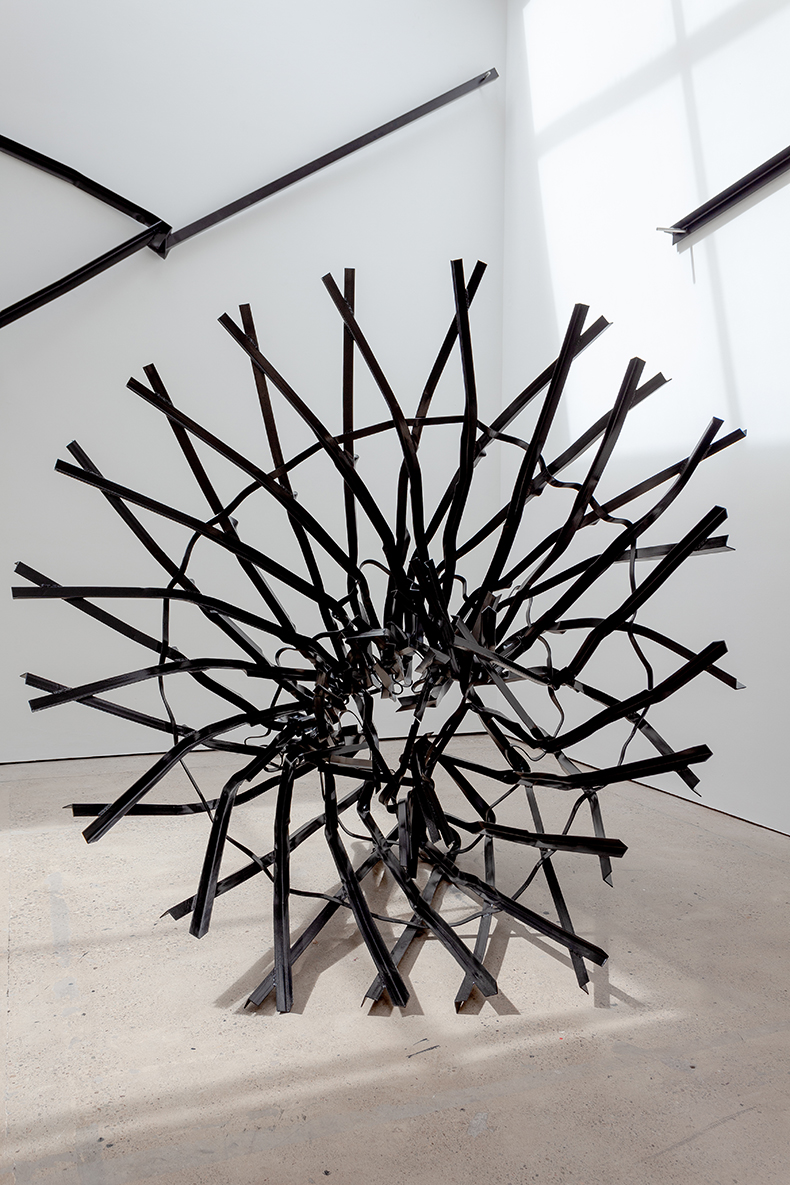
Tower (2019), Monika Sosnowska. Photo: Patrick Jameson; courtesy the artist and the Modern Institute/Toby Webster Ltd., Glasgow
Across from it stands Monika Sosnowska’s Tower (2019), a large basket-like structure of steel struts, which begin in an orderly weave and come together in a tangle. It’s a reference to the pioneering and audacious radio towers erected by the engineer Vladimir Shukhov in the early days of the Soviet Union. These were bold statements of the aspirations of the revolutionary state, and one was photographed by Alexander Rodchenko. But another collapsed during construction, killing several workers. Utopian ambition, over-reach and failure are provocative and apt themes. Another work that uses materials to its advantage is Here I Am, Waiting by the Birmingham-based artist Ruth Claxton, an installation in the gallery’s small, dark tower room. Sheets of retro-reflective material lurk in the dark, sometimes picking up second-hand gleams from outside. With a phone torch, or through a camera flash, the space is transformed. Quotidian working materials meet ghost-hunting and the invisible realm – a sort of hi-vis seance.
The show deliberately combines local interest with global reach. Shezad Dawood’s tapestry The Directorate (2019) represents the abandoned US embassy in Karachi; Ola Hassanain’s works, a montage video and printed fabric, reference successive British and Soviet modernist influence on Khartoum, the Sudanese capital. Seher Shah’s numerous geometric screenprints and etchings reflect violence on the streets of New Delhi and the international appeal of Le Corbusier.
The Directorate (2019), Shezad Dawood. Photo: Sharjah Art Foundation; courtesy the artist, Jhaveri Contemporary, Mumbai and Timothy Taylor, London
But the cumulative effect never convinces. The broad curatorial brush is evident right at the start, where NT’s Brutal is one of four film pieces that introduce the exhibition, alongside Kihlberg & Henry’s energetic, agitproppy Slow Violence, Maria Taniguchi’s Mies 421, and Ho Tzu Nyen’s trippy The Cloud of Unknowing. These films, individually interesting and worthwhile, have a combined viewing time of about an hour, so only the most dedicated visitor will linger through them all (thank heavens for the Bloors’ benches), and they all pull in different thematic directions.
Therein lies the weakness in a show that is often stimulating in its components: overall, its terms of reference are too broad. ‘Horror’ means many things, and different things to different people, the curator Melanie Pocock said in remarks accompanying the tour, and the same applies to ‘modernism’. Very true, but it has translated into an accommodating vagueness, where some more discriminating rigour would have been preferable, in mood if nothing else. Above all, horror is about atmosphere, and ‘Horror in the Modernist Block’ is a little too diffuse to sustain it.
‘Horror in the Modernist Block’ is at Ikon Gallery, Birmingham until 1 May 2023.
Unlimited access from just $16 every 3 months
Subscribe to get unlimited and exclusive access to the top art stories, interviews and exhibition reviews.

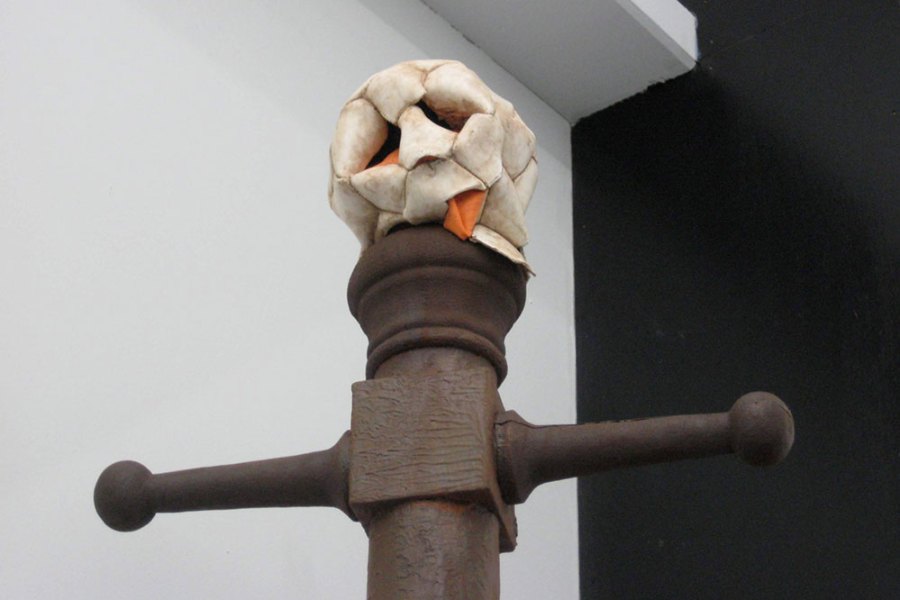
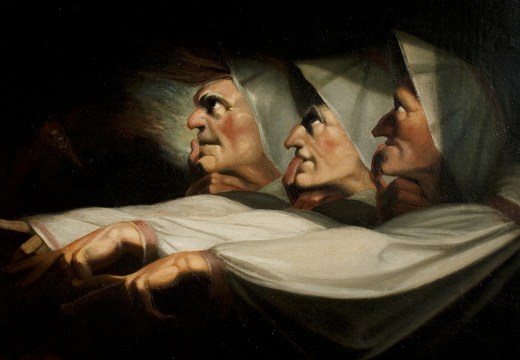
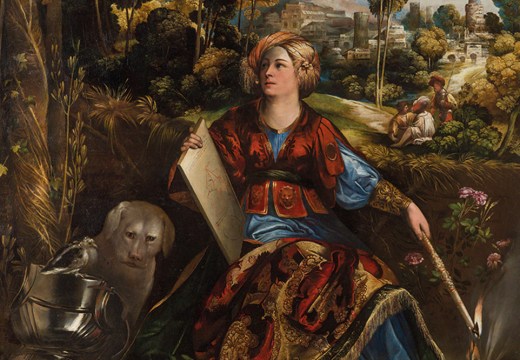
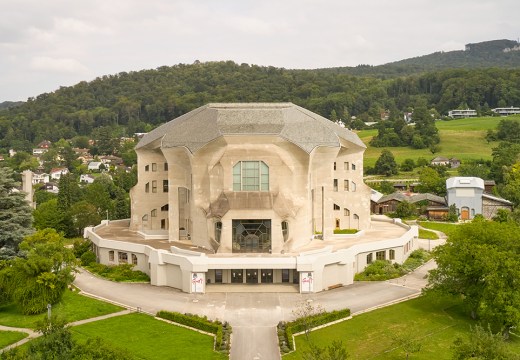









![Masterpiece [Re]discovery 2022. Photo: Ben Fisher Photography, courtesy of Masterpiece London](http://www.apollo-magazine.com/wp-content/uploads/2022/07/MPL2022_4263.jpg)
It’s time for the government of London to return to its rightful home